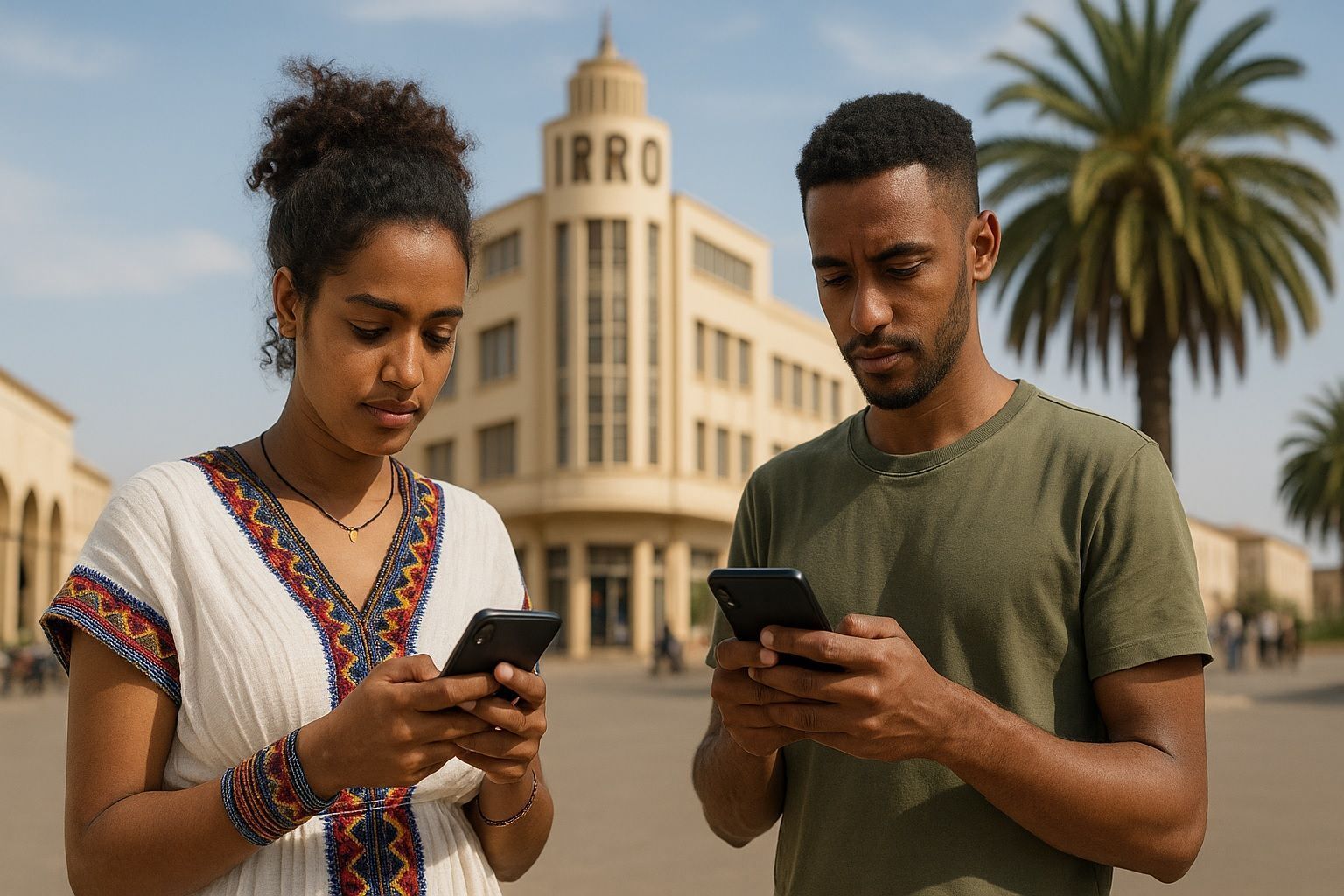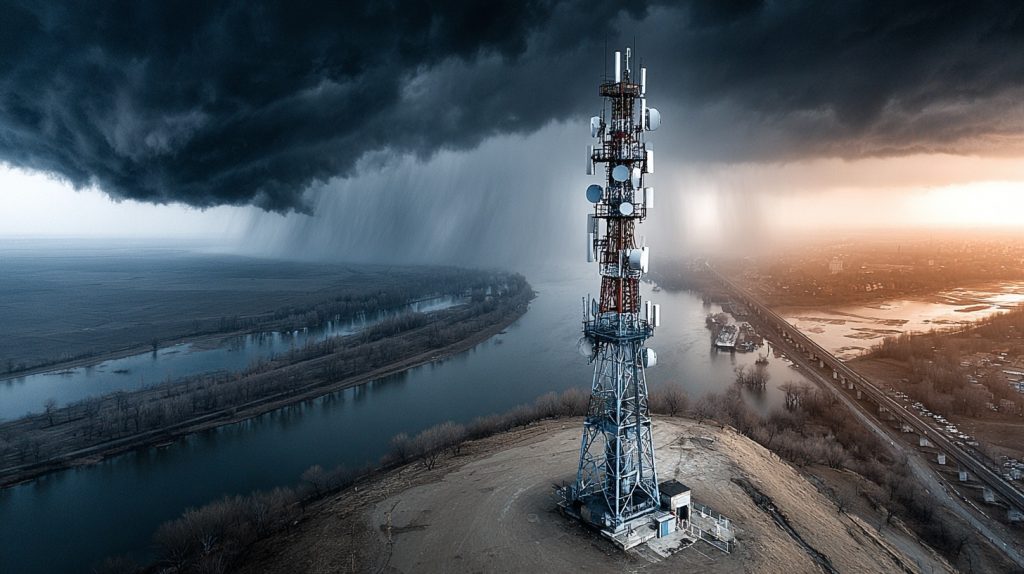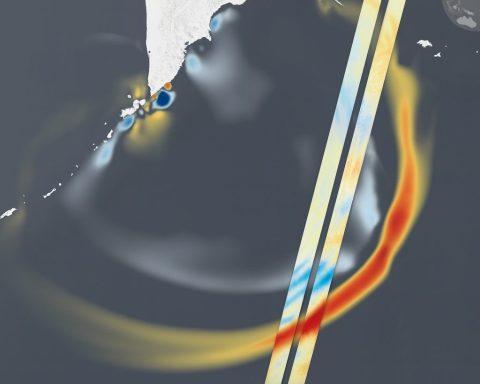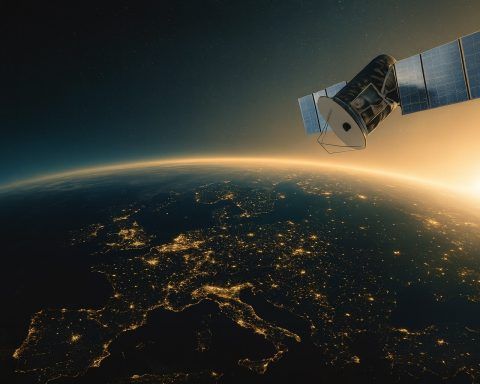- As of early 2024, about 26% of Eritrea’s 3.7 million people were internet users.
- Eritrea is the only coastal African nation with zero submarine fiber-optic cable landings.
- The telecom sector is entirely state-owned and monopolized by Eritrean Telecommunication Services Corporation (EriTel), with no private ISPs or competing mobile operators.
- Public mobile data is essentially unavailable; the mobile network runs on 2G GSM with 3G/4G largely disabled for ordinary users.
- Fixed broadband remains extremely limited, with fewer than 150 subscriptions in the mid-2010s.
- Internet cafés are the primary access point, with fewer than 10 in Asmara and roughly 100 nationwide.
- EriTel’s fixed internet via ADSL/VDSL can be as slow as 1 Mbps down, with some VDSL packages offering up to 4–5 Mbps in special cases.
- A 1 GB data package costs about 1,000 Nakfa (roughly US$60–65), and the average monthly broadband package was about US$117 in 2024.
- Starlink is not officially licensed or available in Eritrea as of 2024, with no announced launch date.
- CPJ ranks Eritrea as the world’s most censored country, and internet cafés are routinely surveilled by security agents.
Eritrea is notorious for its exceptionally limited internet connectivity – often likened to a “digital desert” or even called the “North Korea of Africa” in terms of information isolation. Despite being a coastal nation in the Horn of Africa, Eritrea has eschewed modern internet infrastructure and access for decades. Fewer than 1 in 4 Eritreans use the internet, and until very recently it was the only country on the continent without any public mobile data network [1]. Those who do get online face sluggish speeds, exorbitant costs, and heavy government censorship. Meanwhile, new technologies like satellite internet (e.g. SpaceX’s Starlink) offer a tantalizing hope of bridging the connectivity gap – but only if Eritrea’s authoritarian regime permits it. This report provides a comprehensive, up-to-date look at internet access in Eritrea, covering the infrastructure (or lack thereof), availability to ordinary people, the regulatory and censorship environment, comparisons with neighboring countries, and how satellite broadband could upend the status quo.
Overview of Internet Infrastructure in Eritrea
State Monopoly and Minimal Infrastructure: Eritrea’s telecom sector is entirely state-owned and monopolized by Eritrean Telecommunication Services Corporation (EriTel) [2]. EriTel is the sole provider of fixed telephone lines, mobile services, and internet in the country, effectively controlling the only gateway to the global internet [3]. Unlike most countries, Eritrea has no private ISPs or competing mobile operators – all connectivity is funneled through the government monopoly [4] [5]. This lack of competition and investment has resulted in Africa’s least developed telecommunications market, according to industry analyses [6].
No Submarine Cables: Remarkably, Eritrea is the only coastal African nation with zero submarine fiber-optic cable landings [7]. Every neighboring country with a seashore – from Sudan and Djibouti to Somalia – has connected to undersea internet cables, but Eritrea remains the lone holdout. This means Eritrea does not enjoy the high-capacity, high-speed international bandwidth that submarine cables provide. Instead, connectivity has historically relied on microwave links and satellite uplinks for international transit. In fact, when submarine cable companies recently sought to route new cables through Eritrean waters (to avoid conflict zones in Yemen), the Eritrean government ignored the overtures, offering no cooperation [8]. Industry insiders describe Eritrea as a “black hole” in regional connectivity – an abyss with no engagement in global networks [9].
Aging Networks – 2G and Dial-Up Era: Internally, Eritrea’s communications infrastructure is decades behind the times. The country’s mobile network operates primarily on 2G GSM for voice and SMS coverage (about 85% of the country is covered by basic cell signal) [10]. Modern mobile broadband standards (3G, 4G/LTE, 5G) are effectively absent for the general public. Although EriTel has installed some 3G-capable equipment (with Chinese vendor Huawei’s help) and even claims to be rolling it out, in practice the 3G service is disabled for ordinary users [11]. Only select government and military officials with special devices have been able to access mobile data through a restricted CDMA network, while the masses remain limited to 2G service [12]. On the fixed-line side, Eritrea only introduced dial-up internet in the early 2000s and ADSL broadband in select cities in the 2010s. The fixed network is extremely limited: as of the mid-2010s there were fewer than 150 broadband subscriptions in the entire country [13], and even today only a handful of urban businesses and institutions have fixed broadband lines. For most Eritreans, the internet – if available at all – comes via dial-up or shared WiFi from a slow ADSL link at an internet café or workplace.
Limited Expansion Projects: The government has made modest investments to improve telecom infrastructure, often with an eye on essential services and the military. In recent years, EriTel has undertaken efforts to extend connectivity to more towns (e.g. introducing ADSL in some regional centers) and to solar-power telecom sites to cope with electricity shortages [14]. However, nationwide modernization has lagged. By 2018, officials announced a doubling of national internet bandwidth to about “30 Mb” downlink [15] – a trivial capacity by global standards, and one that underscores how starved the country is for data. In short, Eritrea’s internet infrastructure remains a patchwork of outdated technologies, with no fiber backbone, no independent backhaul, and extremely limited last-mile reach.
Access and Availability for the Population
Minimal Internet Penetration: The overwhelming majority of Eritreans have never been online. As of early 2024, only about 26% of Eritrea’s 3.7 million people were internet users [16]. Even this figure may overstate regular access – many users are likely occasional or have extremely limited connectivity. The ITU and World Bank estimate around 20% of the population used the internet in 2023 [17] [18], meaning roughly 4 out of 5 Eritreans remain offline. By comparison, neighboring Djibouti has 65% internet penetration and even conflict-torn Sudan approaches 30% [19] [20]. In raw terms, Eritrea had only about 700,000 internet users in 2025 [21] – leaving 2.86 million people (80% of the population) completely unconnected [22]. This digital exclusion is especially stark in rural Eritrea: with over half the population in rural areas, lack of telecom infrastructure outside cities means villages often have no access at all.
No Mobile Data for Citizens: A critical factor in Eritrea’s low usage is the absence of mobile internet for the public. Unlike virtually every other country, Eritrea did not enable 3G/4G data on its mobile network for general users (ostensibly fearing the spread of information – more on that in censorship section). Mobile penetration – having any cell phone – is also low at around 22% of the population in 2025 [23]. Many Eritreans cannot even afford a basic phone or SIM card, let alone a smartphone. Until recently, those in national service (conscripts) were forbidden from owning mobile phones [24]. As a result, connectivity is largely confined to certain demographics: urban residents, the diaspora and their families, and government-approved contexts.
Internet Cafés and Shared Access: With home internet practically nonexistent, Eritreans who do go online typically do so in internet cafés or offices. There are only a few internet cafés in Asmara (fewer than 10 by some counts) and roughly 100 across the whole country [25], many with just a handful of aging computers. These cafés often use a single dial-up or ADSL line shared via WiFi, resulting in glacial speeds. Nonetheless, they remain vital lifelines for ordinary people to check email or social media (when possible) and for students to access educational materials. Internet café usage comes at a price – literally (hourly fees) and figuratively (monitoring by authorities). As one exiled journalist explained: “It isn’t allowed to have Internet access in your home… Internet cafes are monitored by security agents, so people often don’t feel comfortable enough to read or open any website… out of fear, many people don’t check opposition websites” [26]. In short, even where internet is available in Eritrea, it is scarce, slow, public, and surveilled.
Urban vs Rural Divide: Eritrea’s capital Asmara and a few other towns (Massawa, Keren, Mendefera, etc.) enjoy the little connectivity that exists – for example, Asmara has the lion’s share of the country’s telephone lines and hosts the central internet exchange. About 43% of Eritreans live in urban areas [27], and this minority has far better chances of finding an internet café or mobile signal than the 57% in rural areas [28]. Many villages have no phone coverage or only basic voice service. Some remote regions rely on satellite phones or HF radio for communication. The urban youth, in particular, have shown eagerness to get online (e.g. via social media activism during rare open periods), but their counterparts in the countryside remain essentially cut off from the digital world. This deep urban-rural digital divide exacerbates Eritrea’s information inequality.
Regulatory and Censorship Environment
Tight Government Control: Eritrea’s internet is not only limited in scale – it is also deliberately tightly controlled by the regime. The government of President Isaias Afwerki has ruled with an iron grip since independence in 1993, and it extends its authoritarian model into the digital realm. All communications infrastructure is state-owned, and by law all Internet Service Providers must route through the state gateway [29]. This enables easy monitoring and filtering of traffic. Every internet user in Eritrea effectively connects via EriTel’s central hub, where communications can be surveilled. The result is an environment where, as Reporters Without Borders notes, “the government controls the Internet and all media in Eritrea, creating a restrictive environment for the press” [30].
World’s Most Censored Country: According to the Committee to Protect Journalists (CPJ), Eritrea ranks #1 on the list of the world’s most censored countries – even above North Korea [31]. Independent journalism inside Eritrea has been obliterated (no private media since 2001), and the regime’s control over information is near-absolute. Internet access is so scant that outright web censorship (blocking sites) is almost unnecessary; as CPJ wryly observed, the government “doesn’t need to explicitly censor online communications since such a small share of the population uses the Internet” [32]. Nonetheless, the state does take measures to restrict online content: popular social media sites like Facebook have been intermittently blocked or throttled, and opposition diaspora websites are often filtered or their content scrutinized. Many Eritreans who can go online use VPNs to bypass these blocks [33].
Surveillance and Self-Censorship: Inside Eritrea, using the internet can be perilous. Internet cafés require users to register with an ID and often log their activities [34]. Plainclothes security agents are known to loiter in cafes or pose as fellow users to watch for “subversive” activity [35]. Opening opposition news, human rights reports, or diaspora forums on a public computer can land one in interrogation. This pervasive surveillance has bred extreme self-censorship: as one exiled editor explained, Eritreans online avoid any website that might be deemed critical of the regime, “out of fear [they] don’t check those sites… one individual [caught] opens an opposition website, he would definitely be followed [and] summoned to the police station” [36]. The consequence is a population that largely stays silent or anonymous on the internet. Social media use domestically is almost nil (fewer than 14,000 social media users in 2025, about 0.4% of the population) [37] [38], in part because people fear repercussions for online expression.
Legal and Policy Barriers: The Eritrean government’s stance can be summed up as “security over connectivity.” In 2011, during the Arab Spring, authorities scrapped a planned rollout of mobile internet because they feared social media-fueled uprisings [39]. This decision entrenched a policy of deliberate digital under-development. There is no “Freedom of the Internet” law – quite the opposite: all telecommunications fall under national security supervision. There are reports that digital communications are monitored without warrant [40], and the government has been known to shut off SMS texting services during sensitive periods (e.g. to preempt protest organizing). With no independent judiciary or legislature to challenge executive decisions, there are effectively no privacy protections or free expression guarantees online in Eritrea. The result is one of the most oppressive internet environments on the planet – a fact reflected in Eritrea’s rock-bottom rankings in Freedom House’s Internet Freedom index (often not even scored due to lack of data) and CPJ’s censorship index [41] [42].
The Diaspora’s Role: Ironically, while domestic internet is muzzled, Eritrea’s diaspora plays a significant role in the online space, running news sites, forums, and campaigns on behalf of silenced voices. The Eritrean diaspora in North America and Europe has created a sort of “external internet” for Eritrean affairs – from news portals like Assenna to opposition Facebook groups. However, the Eritrean state attempts to counter these with its own propaganda online and by cyber-spying on diaspora activities. Eritrea has been accused of harassing diaspora journalists and hacking dissident websites [43]. Meanwhile, people inside Eritrea rely on relatives abroad to send them news (often literally printing emails or downloading articles to USB sticks). The regime also jams foreign satellite TV and radio signals, further sealing information flows [44]. In sum, the regulatory environment ensures any internet access in Eritrea comes with strings attached: it is slow, scarce, watched, and heavily filtered to align with the government’s desire for isolation and control.
Fixed Broadband vs. Mobile Internet
Fixed Broadband: Given the lack of mobile data, fixed-line broadband is the only source of “real” internet for civilian use – and even that is extremely scarce. EriTel offers fixed internet via ADSL/VDSL over telephone lines in major cities, and via WiFi point-to-point links or VSAT (satellite) for some enterprise customers [45] [46]. The available speeds are low: common ADSL plans provide 1 Mbps downlink (or less) on a shared basis [47]. EriTel has a tiered system of “Platinum” dedicated plans (targeted at organizations) and “Silver” shared plans for small users. For instance, an ADSL “Silver” package might offer 1 Mbps download / 512 kbps upload with certain time-of-day limits [48]. The lucky few with VDSL can get a bit more bandwidth (e.g. up to 4–5 Mbps during nights or weekends under special packages) [49] [50]. These speeds are a far cry from global broadband averages, but in the Eritrean context a 1–4 Mbps link is coveted connectivity. Still, fewer than 2% of households have any internet access at home [51], and fixed broadband subscriptions number only in the low hundreds nationwide. Most are in Asmara (government offices, embassies, UN agencies, NGOs, and a handful of businesses). Even critical sectors like banking and higher education struggle with limited bandwidth.
Mobile Internet (or Lack Thereof): In most developing countries, mobile networks have driven the internet boom – but not in Eritrea. As noted, no 3G/4G service is available to the public [52]. The national mobile network, run by EriTel, only provides GSM voice and SMS to subscribers. This means that while Eritrea technically has around 793,000 mobile connections active (SIM cards) [53], the vast majority of those users cannot use their phone for internet access. Some basic services like MMS or rudimentary GPRS might exist, but any high-speed data on EriTel’s network is restricted. This policy choice – effectively “turning off” mobile internet – has kept smartphones largely functioning as just cameras and music players unless connected to WiFi. For context, by early 2025, only 48% of EriTel’s mobile connections were even 3G-capable devices (and those were not actually getting data) [54]. In short, Eritrea’s population has been stuck in a 2G era, missing out on the mobile broadband revolution that swept Africa in the past decade.
Implications: The absence of mobile internet severely limits information access for average Eritreans. In countries like Ethiopia or Kenya, even rural populations now get online via affordable smartphones and 3G/4G networks – accessing everything from WhatsApp to Wikipedia. In Eritrea, a phone is primarily for calls; if you want internet, you must find a fixed connection. This not only curtails personal communication (e.g. using messaging apps is generally not possible outside WiFi zones) but also economic activities (no mobile banking, no app economy, no e-commerce). The “mobile gap” also skews internet use towards the small elite with fixed connections. Young Eritreans, who elsewhere are the most mobile-connected group, have basically zero access on their phones inside the country. Some ingenuity takes place – for example, people might download videos or news articles in an office and share them offline via Bluetooth or memory cards – but these are workarounds to an imposed digital drought.
Continued Rollout? Officially, EriTel claims it is continuing to roll out 3G. In fact, a telecom market report in 2025 noted that EriTel “continues to roll out a 3G network which provides basic internet access to the majority of Eritreans” [55]. However, this statement appears overly optimistic or misleading, since public access remains blocked. It’s possible the infrastructure has been expanded (more 3G towers erected) so that the network could cover major towns if switched on. Some observers speculate that Eritrea might eventually allow 3G internet “in a controlled manner,” perhaps starting with certain sites or using whitelisted apps. But as of 2024, Eritrea remains essentially the last holdout in the world without public mobile internet [56]. The contrast with neighbors is striking – for instance, Rwanda rolled out nationwide 4G by 2017 [57], and even war-torn South Sudan introduced 3G years ago. Eritrea’s deliberate pace means that fixed-line connectivity – however limited – will likely continue as the primary mode until policy shifts.
Internet Affordability and Speed
Sky-High Costs: Internet access in Eritrea is prohibitively expensive for the average citizen. By global rankings, Eritrea has one of the most expensive internet costs relative to income. For example, a basic 1 GB monthly data package via EriTel’s ADSL costs about 1,000 Nakfa (ERN) [58] – equivalent to roughly US $60-65 at official rates. (For comparison, in Ethiopia 1 GB of mobile data costs < $1 on average [59].) Even EriTel’s lowest-tier unlimited dial-up plan was reported at around $200 per month in the 2010s [60]. According to a 2024 analysis, the average monthly broadband package in Eritrea costs $117 – placing it among the top ten most expensive in the world [61]. When adjusted for speed, Eritreans pay an astounding $338 per megabit of bandwidth, reflecting the extremely low speeds delivered for the price [62]. These figures far exceed the UN affordability target (which recommends 1 GB of data for no more than 2% of monthly income). In Eritrea, that 1 GB might cost several times the entire monthly income of many citizens, especially those in national service or low-wage jobs.
Barriers to Entry: Simply getting online involves significant upfront costs. A new EriTel SIM card, when they were first offered, required a fee of around US $46 (a huge sum locally) [63]. Home broadband, if available, entails installation fees, equipment purchase, and deposits. EriTel’s own price sheets list one-time charges: for instance, a Wi-Fi Platinum setup has an installation fee ~2,966 ERN and router cost ~12,697 ERN (in total hundreds of dollars) [64]. Such costs ensure that only institutions, NGOs, and affluent individuals even consider a private internet connection. The vast majority of Eritreans rely on pay-per-use options like internet café time. Even there, the cost is steep: about 20 Nakfa/hour in an internet café, which is about $1.34 – the price of several loaves of bread locally [65]. To someone earning a few dollars a day (or a token state salary), an hour online is a luxury item.
Speeds and Quality: What does one get for these high prices? In short, very slow speeds by modern standards. Dial-up connections (still used in some places) top out at 40–50 kbps. ADSL lines in Asmara often sync at a few hundred kbps up to 1–2 Mbps, but congestion and sharing mean real throughput is lower. EriTel’s “broadband” plans indicate speeds like 256 kbps, 512 kbps, 1 Mbps depending on tier [66] [67] – and those may be split among multiple users. Even the premium VSAT satellite packages EriTel sells to remote customers offer only 512 kbps to 2 Mbps downloads for monthly fees in the thousands of dollars [68]. By comparison, the global median fixed broadband speed is over 100 Mbps, and even mobile median speeds globally are around 30 Mbps. In Eritrea, an internet user is fortunate to get a 0.5–1 Mbps connection, and even more fortunate if that link stays up reliably.
User Experience: These slow speeds dramatically shape the Eritrean internet experience. Streaming video or audio is essentially impossible in real-time – YouTube, for instance, is largely out of reach (not to mention it may be officially blocked). Even downloading a few megabyte file can be an exercise in patience. Websites take tens of seconds or minutes to load, if at all. It’s no surprise that text-based services dominate: email, simple messaging, and low-bandwidth applications. Any bandwidth-heavy task (video calls, large file transfers, cloud applications) is off the table. This also limits the usefulness of the internet for education and commerce; interactive e-learning platforms or e-commerce sites are often too data-heavy to function. According to Ookla speed test data, Eritrea is usually absent from rankings due to insufficient samples, but anecdotal evidence and regional comparisons indicate that Eritrea’s internet speeds are among the very slowest in the world. (For context, neighboring Sudan’s median mobile speed was 7.7 Mbps in early 2024 [69] – Eritrea’s would be a tiny fraction of that since mobile data isn’t even on.) Latency is also high, especially when satellite links are involved, adding to the sluggish feel.
Affordability vs. Government Revenue: The Eritrean government has been content to keep prices high, possibly because telecom revenue is a valuable source of hard currency. With a monopoly, EriTel can charge steep rates to the few entities that must have connectivity (diplomatic missions, NGOs, mining companies, etc.). Indeed, observers have noted that “the government to-date has been happy with the revenue from its telecoms monopoly” even if it means minimal popular access [70]. This prioritization of state revenue over public service has meant internet in Eritrea is a privilege of the few: those with the ability to pay, or those in positions of power. The upside is that demand far outstrips supply – if prices were to be lowered, many more Eritreans would certainly seek access. But until structural changes occur, affordability will remain one of the biggest hurdles keeping Eritrea’s internet penetration among the lowest globally.
Satellite Internet: Starlink and Other Options
One development that could potentially transform Eritrea’s connectivity is the advent of new satellite internet services. Historically, Eritrea has used satellites mainly for backbone connectivity and for isolated VSAT links. But recent innovations in low Earth orbit (LEO) satellite broadband – like SpaceX’s Starlink and the UK-backed OneWeb – offer high-speed internet beamed from space directly to user terminals. Could these bypass Eritrea’s terrestrial bottleneck and censorship? The answer is complicated.
Current Satellite Use in Eritrea: Even before Starlink, some Eritrean institutions have relied on VSAT (Very Small Aperture Terminal) satellite dishes for internet. EriTel itself provides VSAT service to clients in remote areas, albeit at extremely high cost (hundreds or thousands of dollars per month) [71]. International organizations, foreign embassies, and UN missions in Eritrea typically maintain their own satellite links for secure communications. These setups use traditional geostationary satellites (e.g. Intelsat) and offer modest speeds. The general public, however, has not had access to satellite internet – you couldn’t legally install your own dish and subscribe to a service without government approval. Importantly, Eritrea’s national ISP gateway uses satellite for international bandwidth (since no undersea cable). This means the country’s limited internet feed is already coming via satellite, just aggregated at the telco level rather than individually.
Starlink’s Promise:Starlink, operated by SpaceX, is a constellation of thousands of LEO satellites that provide broadband with low latency. In theory, Starlink could deliver 100+ Mbps internet anywhere in Eritrea with just a small dish and router. For a digitally starved nation, this sounds revolutionary. Indeed, members of the Eritrean diaspora have publicly appealed to Elon Musk to deploy Starlink for Eritreans, especially after seeing Starlink help Ukraine maintain connectivity during war [72]. In March 2022, a Twitter campaign with the hashtag #Starlink4Eritrea gained traction, highlighting that Eritrea has been “isolated for two decades due to lack of internet access” and imploring SpaceX to step in [73]. Musk’s company did not make any public commitment, and the Eritrean government certainly did not invite Starlink. However, Starlink’s satellites physically cover the region, so the main barrier is regulatory and logistical (getting user terminals into the country and activated).
Official Availability: As of 2024, Starlink is not officially licensed or available in Eritrea. SpaceX’s own coverage map shows Eritrea as “No Planned Launch Date” [74]. In fact, Eritrea is one of a handful of countries (alongside the likes of North Korea, Afghanistan, etc.) with no announced Starlink timeline [75]. This is unsurprising – Eritrea would need to grant a license and earth station rights, which it has not. Moreover, many African governments have been cautious or resistant to Starlink, viewing it as a disruption to state control and domestic telecom markets [76] [77]. MyBroadband reports that SpaceX faces regulatory obstacles in countries where authorities and local telcos resist losing control [78]. Eritrea’s regime, given its track record, is likely extremely wary of Starlink allowing unfiltered internet into the country.
Workarounds and Roaming: Some tech-savvy individuals have explored whether Starlink could be used unofficially in Eritrea via roaming. In theory, a Starlink dish activated in a nearby country could be physically brought into Eritrea and might connect if the satellite footprint and backhaul allow. For a time, SpaceX offered a “Starlink Roam” plan, but by late 2023 the company disabled roaming services in most of Africa to comply with regulations [79]. Even if one managed to smuggle a Starlink kit into Eritrea, several challenges remain: the dish needs a clear view of the sky and would be highly conspicuous (a literal satellite dish in a country where private satellite comms are forbidden). The system also needs to link to a ground station – Starlink currently has ground gateways in various African countries, but none in Eritrea or immediate neighbors, so connectivity might route through a station in, say, Kenya or elsewhere. The Eritrean government’s security apparatus would likely detect and confiscate unauthorized satellite equipment; possession could even be deemed espionage. Indeed, in neighboring Sudan (which has far more internet users), authorities banned Starlink devices in 2023 out of fear they’d circumvent control during the conflict [80]. One can imagine Eritrea taking a similar or harsher stance.
OneWeb and Others:OneWeb, another LEO satellite network, has partnered to offer services in Africa via intermediaries. A European provider, GlobalTT, advertises that it can deliver OneWeb or Starlink connectivity of up to 200 Mbps in even remote African locations [81] [82]. It specifically lists Eritrea as an area where they can provide VSAT and now LEO solutions [83] [84]. These would still require government clearance to import and operate the hardware. So far, there’s no evidence of any widespread satellite internet adoption in Eritrea – it remains limited to controlled institutional uses.
The Satellite Lifeline – Potential and Pitfalls: If, hypothetically, Eritrea opened up to satellite internet, the impact could be dramatic. A service like Starlink could leapfrog the country’s infrastructure woes, bringing high-speed connectivity to anyone with a $300 dish and $80/month subscription. It could connect rural communities that will likely never see fiber or even 4G. It could enable businesses, researchers, students, and doctors to access global information and cloud services in real-time. Crucially, it could break the state monopoly on information, since data would bypass the government’s gateway and go directly through SpaceX’s network. And that is precisely why it’s contentious. For Eritreans yearning for connectivity, satellite broadband is a beacon of hope – a way to finally join the global internet. For the Eritrean regime, it’s a Pandora’s box that could undermine years of information control.
In summary, satellite internet is technically available but politically restricted in Eritrea. The government has not signaled any willingness to license Starlink or similar services. Unless that changes, any satellite “lifeline” would have to be covert. The diaspora’s call to Elon Musk highlighted the dire situation, but ultimately, deploying Starlink in Eritrea without government consent would be difficult and risky for users on the ground. The coming years will tell whether international pressure or the march of technology forces Eritrea’s hand. Until then, the idea of ordinary Eritreans browsing freely via satellite remains more science fiction than reality – a what-if scenario in a country still firmly offline.
Government Stance on Internet and Satellite Communication
Internet Skepticism as Policy: The Eritrean government’s public stance on the internet has been one of ambivalence at best and hostility at worst. Officials often justify the slow roll-out by citing priorities of basic needs and security. President Isaias Afwerki himself seldom comments on internet access directly (unsurprising given the tightly controlled domestic media), but the actions of his government speak loudly. After witnessing how social media helped fuel protests and uprisings in other countries, the regime clearly decided that a connected citizenry was a potential threat to its survival [85] [86]. As one Reddit commentator succinctly put it, “Eritrea is ruled by a totalitarian government that cannot tolerate this kind of internet inroads… as soon as you have mobile internet you get encrypted communications, allowing coordination of pro-citizen (anti-dictatorship) activity” [87]. This captures the regime’s mindset: the internet is seen first and foremost through a security lens.
Officials have also downplayed the internet’s importance by saying Eritrea has “higher priorities” such as food, energy, and healthcare, and that the country lacks resources to invest in ICT [88]. There is a narrative of “development on our own terms” – implying that Western insistence on internet freedom is a form of interference or that Eritrea will expand internet at a pace that doesn’t compromise its values. In state media, any improvement in connectivity (like connecting a school or opening a new telecom station) is celebrated as a technological achievement, but you’ll rarely hear acknowledgement of how far behind Eritrea lags. Critically, the government has never outlined a clear plan for universal internet access or digital strategy. Unlike other African nations that have ICT policies and broadband targets, Eritrea has kept such plans opaque if they exist at all.
Censorship and Denial: The regime’s stance is also reflected in outright censorship moves. For example, VOIP services like Skype were banned for a period in the 2000s, reportedly to prevent inexpensive communications outside official channels (especially among the diaspora and families). The government has denied external reports about its censorship as “exaggerated” but simultaneously refuses to allow independent verification. When confronted with Eritrea’s bottom ranking in press freedom or internet freedom indices, officials often retort that these are politicized reports and that Eritrea chooses to prioritize “harmony” and “national security” over unfettered media. State media frequently carries segments accusing foreign “social media campaigns” of spreading disinformation about Eritrea, reinforcing the notion that an open internet is a conduit for hostile influence [89]. In a 2023 interview, President Afwerki railed against “distortion and disinformation campaigns” by Western media and online outlets [90] – further evidence that the leadership views the online world largely as a battleground of narratives rather than a public good for its citizens.
Satellites = Threat to Sovereignty: Regarding satellite communications, while there have been no explicit public statements about Starlink from Eritrean officials, one can extrapolate from their general approach to telecommunications. Any uncontrolled channel of communication is deemed a challenge to state sovereignty. The notion of an outside company providing internet directly to Eritreans without passing through EriTel likely horrifies the security apparatus. As mentioned, other authoritarian governments have either blocked Starlink (e.g. Russia in occupied Ukraine, Iran by jamming) or demanded that it work through local partners. Eritrea would almost certainly insist on the latter, if it were to consider it at all – for instance, requiring Starlink to route through a government gateway or to give authorities access to user data, conditions that SpaceX would not agree to. Thus the default stance is to prohibit independent satellite terminals. It’s telling that satellite phones are also tightly restricted in Eritrea (journalists and peacekeepers have had sat phones confiscated in the past).
No Compromise on Control: The bottom line is that the Eritrean government’s stance is one of no compromise on controlling communications. Even as it slowly expands network infrastructure, it does so in a way that maintains choke points. For example, if 3G is ever offered, one can expect heavy content filtering and surveillance to be baked in. The government likely prefers to err on the side of isolation than to risk an open floodgate of information. This has kept Eritrea stable under one regime for decades, but at a huge cost to socio-economic progress. While the rest of the world embraces digital transformation, Eritrea remains in a self-imposed digital dark age, with the leadership essentially saying, “That’s the price of sovereignty.” International observers and Eritrean tech enthusiasts continue to hope that economic logic (the need to improve the economy, education, etc.) will persuade the government to liberalize internet access. However, until Eritrea’s political climate changes or external pressure mounts, the official stance is likely to remain: connectivity on our terms, or not at all.
Historical and Geopolitical Context
To understand Eritrea’s internet isolation, one must view it in the context of the country’s history and geopolitical posture. Eritrea is a young nation (independent since 1993) that fought a long war for liberation from Ethiopia, followed by a devastating border war (1998–2000). These experiences bred a governance philosophy of self-reliance, suspicion of outside influence, and an extreme emphasis on security. The internet arrived just as Eritrea was entering a period of isolation in the early 2000s, and it became collateral damage to the political climate.
Post-Independence Optimism (1990s): In the 1990s, Eritrea initially had a reputation for pragmatism and even flirted with openness. There was interest in technology – the country got its first internet connection in 1996 (email via UUCP) and a full TCP/IP link by the late 90s. The Telecom Services of Eritrea (TSE) existed as a government agency, but at that time some considered partnerships or at least using the internet for development. However, independent media blossomed briefly and was then crushed in 2001 when the government shut down all private newspapers and jailed journalists. This coincided with a tightening of control across society after the border war. The once-considered idea of privatizing or liberalizing EriTel was shelved [91].
War and Isolation (2000s): Following the border conflict with Ethiopia, Eritrea became increasingly isolated internationally. It faced UN sanctions from 2009–2018 for alleged support of armed groups in the region. The economy suffered, and many sectors (including telecom) stagnated. Investments in fiber optics or mobile networks that other African nations pursued were not priorities for Eritrea, which was under a “no war, no peace” tension and pouring resources into defense. Meanwhile, Ethiopia (Eritrea’s erstwhile enemy) controlled all regional telecom routes. It’s notable that landlocked Ethiopia greatly improved its connectivity via Djibouti’s cables, while coastal Eritrea did not tap into any undersea cables due to political and economic estrangement. There were rumors that at one point a submarine cable consortium offered Eritrea a landing station for free (to complete regional loops), but the Eritrean government supposedly declined, possibly fearing dependency or espionage via cables [92]. Whether apocryphal or not, this story aligns with Asmara’s general reluctance to integrate with global infrastructure.
Peace with Ethiopia and Aftermath (2018–2020): A breakthrough came in 2018 when Eritrea and Ethiopia signed a peace and friendship agreement, ending two decades of hostility. For a brief moment, there was optimism that Eritrea might open up – the border was opened, trade resumed, and observers speculated that telecom links might be established between the countries. Ethiopia’s telecom company could have provided a fiber optic connection to Eritrea’s network (giving Eritrea indirect cable access via Ethiopia). However, this opportunity was short-lived. By 2020, Ethiopia slid into civil war (in Tigray, a region bordering Eritrea). Eritrea aligned with the Ethiopian government militarily, and the borders closed again amid the conflict. Whatever nascent plans existed for cross-border fiber were put on hold. The Tigray war (2020–2022) further reinforced Eritrea’s siege mentality and likely diverted any government bandwidth (no pun intended) away from civilian telecom improvements. Additionally, Eritrea’s involvement in that war led to new rounds of Western sanctions, which could indirectly make sourcing telecom equipment or foreign investment harder.
Regional Telecom Landscape: Geopolitics also means Eritrea missed out on regional initiatives. East Africa has several consortium cables (EASSy, SEACOM, DARE1, etc.) and regional backbones. Djibouti, just down the coast, became a major telecom hub, even hosting data centers and Internet exchange points [93] [94]. Ethiopia started opening its telecom sector, and even Somalia and Sudan, despite turmoil, have multiple telecom operators. Eritrea by contrast doubled down on a go-it-alone approach. Its regional relationships are peculiar: cordial with Djibouti now (after past clashes), but still not leveraging Djibouti’s infrastructure; friendly with Sudan for some years, but Sudan’s instability and now war limited cooperation; hostile or wary toward Western companies, but open to Chinese technical assistance. Huawei’s role in building Eritrea’s mobile network is one example – but unlike elsewhere, where Huawei built 3G/4G networks for millions of users, in Eritrea it built a network that largely sits idle in terms of data.
Human Development Impact: The historical isolation has had a clear impact on Eritrea’s human development indicators. Educationally, the lack of internet access means schools and universities operate with outdated materials and limited research capacity. Many Eritrean professionals have never experienced the modern internet until they go abroad. The government has tried to use intranet solutions – for example, creating local digital libraries or educational CDs to compensate for no internet, as mentioned in state media “feel-good stories” [95]. But these are poor substitutes. Economically, Eritrea’s tech and outsourcing sector is non-existent, and innovation is stifled. One of the biggest exports of Eritrea is skilled people (through migration), partly because they see no future in an isolated economy.
“Africa’s North Korea” Parallel: Eritrea’s geopolitical outlook has often been compared to North Korea’s, given both countries’ combination of militarization, isolation, and information control. CPJ explicitly noted that Eritrea and North Korea use similar tactics – state-run intranets, bans on independent media, and extremely low internet penetration (under 1% in Eritrea at the time of that 2015 report) [96] [97]. One difference is that Eritrea does not have a sophisticated technical censorship system (like China’s Great Firewall); it hasn’t needed one because access points are so few. But in spirit, Eritrea’s leadership shares the North Korean view that uncontrolled internet access is a Trojan horse that could undermine their authority.
In sum, Eritrea’s internet landscape is a product of its history: born out of conflict, hardened by isolation, and governed by a regime that equates connectivity with vulnerability. Any change to this status quo will likely require changes in the broader geopolitical or internal political dynamics – for instance, a concerted effort by a post-Isaias government to rejoin the global community, or pressure from regional partners to include Eritrea in digital corridors. Until then, the country remains an outlier, its digital present stuck in the dial-up past due to decisions rooted in decades of strife and suspicion.
Comparison with Neighboring Countries
Eritrea’s internet situation stands in stark contrast to that of its neighbors in the Horn of Africa and Red Sea region. A comparative look highlights just how isolated Eritrea is, even relative to countries with their own challenges:
Sudan: Internet penetration ~29% [98]. Despite political instability, Sudan developed a fairly robust telecom sector with multiple operators (e.g. Zain, MTN, Sudani). Before the recent civil strife, Sudan had widespread 3G and 4G mobile coverage in urban areas and was connected to several submarine cables via Port Sudan. Internet cafes and mobile data were common, and social media use was significant in urban Sudan (often a tool in protests). The government in Sudan did impose internet blackouts at times (notably during uprisings in 2018-2019 and in the 2023 war), but those were temporary shutdowns of an existing service – whereas Eritrea simply never provides the service to begin with. Sudan’s average speeds (around 7–8 Mbps mobile median in 2024 [99]) and prices (roughly $1–2 per GB for mobile data) made it light years ahead of Eritrea in practical connectivity, though Sudan’s ongoing conflict now threatens its infrastructure and connectivity. Notably, the war in Sudan saw Starlink terminals smuggled in to provide lifelines when terrestrial networks were down [100] – something that hasn’t happened in Eritrea (yet) because Eritrea’s issue is not destruction but deliberate underdevelopment.
Ethiopia: Internet penetration ~19–20% [101]. Ethiopia, with a much larger population (120+ million), also had low internet percentages until recently, owing to a state monopoly and large rural populace. However, Ethiopia has rapidly expanded in absolute terms: it has tens of millions of users, millions on social media, and since 2020 introduced a second major telecom operator (Safaricom) to compete with Ethio Telecom. 3G and 4G are active in all major Ethiopian cities and many towns. Addis Ababa even has pilot 5G service. Ethiopia has access to multiple submarine cables through Djibouti and Somalia, and a significant fiber optic backbone domestically. Censorship still exists (the Ethiopian government has blocked social media during unrest and there were long internet shutdowns in conflict areas like Tigray), but overall Ethiopians have far more access to information and modern digital services. Mobile money, ride-hailing apps, e-commerce – none of which exist in Eritrea – are growing in Ethiopia. The Ethiopian diaspora doesn’t have to campaign for Starlink; Ethiopia is on Starlink’s roadmap once regulatory hurdles clear, and the country has shown interest in embracing such technologies. The key difference is scale and trajectory: Ethiopia started from a low base but is catching up fast, whereas Eritrea remains stagnated by choice. Both countries once shared the trait of a single government telco, but Ethiopia is abandoning that model while Eritrea clings to it.
Djibouti: Internet penetration ~65% [102] [103]. Tiny Djibouti is an extreme contrast – it leveraged its strategic location to become an interconnection hub. Djibouti hosts at least 8 major undersea cables (with more on the way), has tier-3 data centers and an Internet Exchange Point (DjIX) [104], and provides transit bandwidth to many landlocked African countries. The majority of Djibouti’s population lives in the capital and enjoys LTE mobile service (two operators now, Djibouti Telecom and Somtel) [105]. While Djibouti’s retail internet prices are still relatively high (monopoly pricing has kept them up, although competition is slowly driving them down) [106], the availability of bandwidth is vast. Djibouti’s government has taken a very different approach: embracing being a communications crossroads. It even hosts foreign military communications (several nations have bases there). Eritrea, in contrast, hosts no foreign telecom infrastructure and even avoided being a transit country. One could say Djibouti exploited globalization for gain, whereas Eritrea avoided it to its detriment. Djibouti’s average citizen has 4G phone access, can stream YouTube, and about 15% are on social media [107] – none of which is true next door in Eritrea.
Somalia: Internet penetration ~28% (estimate) [108]. Despite lacking a strong central government for decades, Somalia’s private sector filled the void. Multiple private ISPs and mobile operators sprang up (Hormuud, Golis, Somtel, etc.), providing 3G/4G in major cities like Mogadishu, Hargeisa, Garowe. Somalia connected to its first submarine cable in 2013, bringing costs down and speeds up. Somalis have widely adopted mobile money and social media. The challenges in Somalia are security (infrastructure attacks by militants) and occasional government-ordered shutdowns (during exam cheating scandals, elections, etc.), but overall Somalis enjoy a far more modern internet experience than Eritreans. The irony is palpable: a country that was stateless and war-torn has better internet access than the highly controlled, peaceful (internally) state of Eritrea. The difference is policy and openness to enterprise – Somali telecom companies operate in a competitive market, whereas Eritrea has no room for private initiative in telecom.
Other East African Neighbors: Kenya and Uganda are further afield but worth mention as context – Kenya has over 90% internet penetration (by some measures) and is an African leader in tech, and Uganda around 60%. These countries have vibrant mobile internet and tech ecosystems, something Eritreans can only witness from afar. Eritrea’s 26% vs Africa’s ~43% average penetration shows it lags behind even the continental average, and is at the bottom alongside countries like Burundi and South Sudan in connectivity [109] [110]. The table below summarizes key differences between Eritrea and select neighbors:
| Country | Internet Users (% of pop.) | Mobile Data Availability | Submarine Cables |
|---|---|---|---|
| Eritrea | ~26.6% (2024) [111] | No public 3G/4G (2G only) [112] | None (0 cables) [113] |
| Ethiopia | ~19.4% (2024) [114] | Yes – Nationwide 3G/4G (5G in Addis) | Indirect (via Djibouti) |
| Sudan | ~28.7% (2024) [115] | Yes – 3G/4G with multiple operators | Yes – Multiple Red Sea cables |
| Djibouti | ~65.0% (2024) [116] | Yes – 4G LTE (two operators) | Yes – 8+ cable landings |
Table: Eritrea vs. neighbors on key connectivity indicators. Eritrea is an outlier with no mobile internet and no submarine cable access, whereas neighbors have embraced modern networks and international links.
In summary, Eritrea’s digital isolation is unique in its region. Every neighboring country, even those with significant instability or poverty, has made strides in expanding internet to its people. Eritrea’s stagnation is not due solely to lack of resources – after all, poorer nations have achieved more – but due to conscious political choices. This comparative gap has implications: Eritrean youth see the disparity when they manage to get information from across the border, and many emigrate partly for greater opportunities that a connected life brings. The regional gulf also means Eritrea is missing out on cross-border digital initiatives, from East African fiber rings to regional tech startups. Eritrea’s neighbors increasingly live in the 21st-century information age, while Eritrea remains effectively stuck in the late 20th-century, digitally speaking.
International Perspectives and Implications
Eritrea’s near-disconnection has not gone unnoticed. International organizations, human rights groups, and even other governments have repeatedly highlighted and criticized Eritrea’s lack of internet freedom and connectivity. Here are key perspectives and implications on the global stage:
Human Rights and Freedom: Groups like Human Rights Watch and Amnesty International have long condemned Eritrea’s suppression of free expression, including online. Eritrea frequently ranks at the bottom of Freedom House’s “Freedom on the Net” index (in years it’s ranked) and last in Reporters Without Borders’ World Press Freedom Index. The UN’s Special Rapporteur on Eritrea has also raised concerns that the absence of internet access is part of the broader pattern of rights abuses – keeping citizens in an information vacuum, limiting their knowledge of their rights and the outside world. In 2019, CPJ named Eritrea the most censored country and specifically cited the government’s decision to halt mobile internet rollout in 2011 and the statistic of fewer than 1% online at that time [117] [118]. These reports frame Eritrea’s internet deprivation as both a symptom and a tool of authoritarian rule. From an international human rights law perspective, Eritrea is failing to meet obligations on freedom of information and expression (Article 19 of the ICCPR, which it has not ratified but is customary). The global trend is increasingly treating internet access itself as a human right (or at least a necessity for realizing other rights), so Eritrea stands as a stark example of digital rights denial.
Development and Economic Growth: International development agencies point out that Eritrea’s lack of connectivity is hampering its socio-economic growth. The World Bank and International Telecommunication Union (ITU) include Eritrea in their statistics and often note it as an outlier. For instance, ITU’s “Measuring the Information Society” reports consistently show Eritrea at the bottom of the ICT Development Index. In practical terms, Eritrea is missing out on the digital economy – e-government, e-commerce, telemedicine, distance learning, etc., are all minimal or nonexistent. The United Nations Sustainable Development Goals (SDGs) include targets for universal internet access, and Eritrea is far off track on those. Some UN agencies have tried to help by establishing community technology centers and bringing connectivity to schools or hospitals in pilot projects [119], but these efforts are small-scale. There is an implicit frustration in the development community: with better internet, Eritrea could improve education, innovate in sectors like agriculture or mining, and better integrate into global markets. But the state’s policies often stymie external ICT projects, viewing them with suspicion.
Geostrategic Implications: Eritrea’s refusal to join submarine cable consortia or to host international telecom infrastructure has regional implications for connectivity resilience. The Red Sea is a crucial internet chokepoint (carrying a large portion of Europe-Asia traffic). As detailed earlier, damage to cables in the Red Sea (due to conflicts like the Yemen war) has prompted the industry to seek alternate routes [120] [121]. If Eritrea engaged, it could strategically become a new landing point, improving global network redundancy. For example, the East Africa Submarine System (EASSy) literally bypasses Eritrea’s coast; adding a branch there would help close a gap. Some proposals, like the DARE (Djibouti Africa Regional Express) cable, did plan a spur to Eritrea, but it’s unclear if it was ever activated or remained on paper due to lack of Eritrean involvement. The Middle East Eye piece reprinted by East African Review explicitly noted that Eritrea’s lack of engagement leaves plans “in limbo” and described the country as a missing link that could solve a strategic vulnerability [122]. Therefore, Eritrea’s stance has a ripple effect: it forces all internet traffic between Asia and Africa/Europe to funnel through Djibouti/Sudan/Egypt routes, with no alternative via Eritrea’s route. In a broader sense, Eritrea’s isolation limits regional integration – from digital trade to cybersecurity cooperation – at a time when the African Union and others are pushing for a more connected continent (e.g., the Digital Transformation Strategy for Africa 2020-2030 which Eritrea has not actively participated in).
Diaspora and External Actors: Eritrea’s large diaspora (a result of flight from political repression and economic stagnation) has taken an active interest in connectivity back home. As mentioned, diaspora activists have appealed to figures like Elon Musk for Starlink [123] and consistently bring up Eritrea’s internet issues in international forums. Some diaspora groups even floated ideas of balloon or satellite-based internet smuggling into Eritrea (drawing parallels to initiatives that attempted to get information into North Korea). While these remain speculative, it shows the yearning for change. On the flip side, the Eritrean government’s narrative to its diaspora supporters is that Western nations use the internet to meddle and that Eritrea’s stand is a proud defiance of neo-colonial pressure. Indeed, state media often cast international criticism of its internet policy as part of a propaganda war against Eritrea.
Investment Climate: The lack of modern communications is also a red flag for foreign investors. Companies are reluctant to set up operations in a country where they can’t reliably email or video-conference with the outside world. The mining sector (one of Eritrea’s main foreign investment areas) has had to negotiate dedicated satellite links to manage their operations and communicate with headquarters. Potential investors in sectors like tourism or manufacturing see the communications gap as a serious infrastructure deficit. Comparatively, Ethiopia’s partial telecom liberalization has attracted huge interest, including from global telecom firms and finance institutions – something Eritrea could benefit from if it ever opened EriTel to partnership or sold additional licenses. For now, however, Eritrea is essentially off the grid in the ICT investment map, missing out on billions of dollars that have flowed into African telecom in the last 20 years.
Cultural and Educational Impact: International scholars and cultural organizations lament that an entire generation of Eritreans is growing up disconnected from the global cultural and knowledge exchange occurring online. Eritrea has a rich heritage and a diaspora that would love greater interaction (through social media, academic collaborations, etc.), but without internet this is stunted. One tangible example: during COVID-19, when education and conferences moved online worldwide, Eritrean students and professionals were largely left out – they simply couldn’t participate in Zoom classes or virtual events from inside Eritrea. This has long-term implications for human capital development. Some international academic projects have tried sending offline content (like Wikipedia copies, offline Khan Academy videos) on hard drives to Eritrean schools to mitigate this, but it’s not the same as live access.
Outlook: Globally, there is some optimism that new technologies (like satellite internet) or regional integration might eventually force a change. The African Union could potentially encourage Eritrea to improve digital access as part of its membership responsibilities. China, as a close partner to Eritrea, might also play a role – if China were to push its own digital infrastructure projects (like smart city initiatives or even Chinese satellite internet services) in Eritrea, the government might consider it within a controlled framework. So far, though, neither Western nor Eastern partners have visibly shifted the needle on Eritrea’s internet isolation.
In conclusion, the international perspective is clear: Eritrea’s current state is an anomaly and a concern. It stands at odds with global trends of increasing connectivity and is seen as detrimental to its people’s welfare and the region’s progress. There is a fine line, however, in how the world can respond. Too much pressure can be spun by the Eritrean government as imperialist meddling; too little means Eritreans remain forgotten in the “offline” shadows. The story of Eritrea’s internet is often cited as a cautionary tale of how government policy can virtually erase a country from the digital map. The hope among many observers is that this will change – that Eritrea will eventually join the global village. But as of 2025, that hope remains unrealized, and Eritrea continues to chart its own isolated course in cyberspace.
Conclusion
Eritrea’s internet landscape is a profound example of digital isolation in the 21st century. The country has all the trappings of physical modernity – cities with electricity, educated youth, smartphones in hand – yet remains largely disconnected from the global information grid. We have seen that this outcome is not due to sheer poverty or lack of technical capacity, but rather a deliberate strategy by Eritrea’s rulers to control and contain the flow of information. The result: an internet penetration of roughly 20–26% [124] [125], among the lowest in the world; no mobile internet for the populace [126]; an antiquated infrastructure with no submarine cables [127]; and an environment where accessing information is both difficult and dangerous.
The comparisons with neighboring countries starkly illustrate how Eritrea has been left behind. Nations with similar or greater challenges have embraced connectivity as a means to develop, whereas Eritrea has treated it as a risk to be minimized. This has widened the gap between Eritrea and the rest of the region in everything from economic opportunity to social connectivity. A student in Asmara today has far less access to knowledge than a student in Addis Ababa or Khartoum. An entrepreneur in Eritrea cannot tap global markets the way one in Nairobi or Kigali can. Over time, this isolation risks cementing Eritrea’s status as an economic and innovation backwater, even as it maintains political stability through authoritarian means.
Looking ahead, the emergence of satellite internet could be a game-changer – but only if Eritrea allows it. Technologies like Starlink promise to cut through the physical bottlenecks, yet the political bottleneck remains. The government’s stance suggests that without its consent, any new avenue of connectivity will be blocked or undermined. That said, pressure is mounting. The diaspora will continue to clamor for creative ways to connect their homeland. The cable industry and neighboring states will continue to woo Eritrea as the last missing piece in a fully connected Africa. And ordinary Eritreans, especially the youth, will continue quietly yearning for the digital freedoms enjoyed elsewhere – some might even take matters into their own hands if given the chance (for instance, furtively using satellite links if they become slightly more accessible).
In a broader sense, Eritrea’s case poses important questions to the international community about the universality of the internet. It underscores that despite techno-optimist assumptions, the internet is not inevitable everywhere – political will can still bar the doors. But history shows that such barriers eventually face erosion. As devices get cheaper, as connectivity options multiply, and as people’s desire for information grows, it will become increasingly difficult for Eritrea to keep the internet genie in the bottle. It may not happen this year or next, but the forces of technology and globalization have a way of cracking even the hardest isolation.
For now, Eritrea remains a digital island, its citizens largely cut off from the vast ocean of online knowledge and communication. The title of this report asked if satellites could break the digital siege – the answer is “potentially yes, but not without the gatekeeper’s key.” The world watches and waits to see whether Eritrea’s leaders will ever use that key to unlock a better connected future, or whether Eritreans will have to continue finding ways to lift the digital veil on their own. Until then, the country stands as a cautionary tale and a subject of deep research interest – a place where the 21st-century internet revolution has been paused by policy, with all the attendant human and developmental costs that entails.
Sources: [128] [129] [130] [131] [132] [133] [134] [135] [136] [137] [138]
References
1. mereja.forum, 2. www.frequencycheck.com, 3. cpj.org, 4. www.budde.com.au, 5. www.budde.com.au, 6. www.budde.com.au, 7. www.submarinenetworks.com, 8. www.eastafricanreview.com, 9. www.eastafricanreview.com, 10. www.frequencycheck.com, 11. www.reddit.com, 12. www.reddit.com, 13. www.ictworks.org, 14. www.budde.com.au, 15. shabait.com, 16. ts2.tech, 17. fred.stlouisfed.org, 18. datareportal.com, 19. ts2.tech, 20. datareportal.com, 21. datareportal.com, 22. datareportal.com, 23. datareportal.com, 24. www.ictworks.org, 25. www.ictworks.org, 26. www.ictworks.org, 27. datareportal.com, 28. datareportal.com, 29. cpj.org, 30. cpj.org, 31. cpj.org, 32. www.ictworks.org, 33. www.agenzianova.com, 34. rsf.org, 35. www.ictworks.org, 36. www.ictworks.org, 37. datareportal.com, 38. datareportal.com, 39. cpj.org, 40. www.state.gov, 41. cpj.org, 42. cpj.org, 43. cpj.org, 44. cpj.org, 45. www.frequencycheck.com, 46. www.eritel.com.er, 47. www.eritel.com.er, 48. www.eritel.com.er, 49. www.eritel.com.er, 50. www.eritel.com.er, 51. www.budde.com.au, 52. mereja.forum, 53. datareportal.com, 54. datareportal.com, 55. www.budde.com.au, 56. mereja.forum, 57. mereja.forum, 58. www.eritel.com.er, 59. www.statista.com, 60. www.ictworks.org, 61. worldpopulationreview.com, 62. worldpopulationreview.com, 63. www.ictworks.org, 64. www.eritel.com.er, 65. www.ictworks.org, 66. www.eritel.com.er, 67. www.eritel.com.er, 68. www.eritel.com.er, 69. datareportal.com, 70. www.ictworks.org, 71. www.eritel.com.er, 72. www.agenzianova.com, 73. www.agenzianova.com, 74. mybroadband.co.za, 75. mybroadband.co.za, 76. mybroadband.co.za, 77. mybroadband.co.za, 78. mybroadband.co.za, 79. www.youtube.com, 80. www.france24.com, 81. www.france24.com, 82. ts2.tech, 83. www.globaltt.com, 84. www.france24.com, 85. www.reddit.com, 86. www.reddit.com, 87. www.reddit.com, 88. www.reddit.com, 89. martinplaut.com, 90. martinplaut.com, 91. www.ictworks.org, 92. www.reddit.com, 93. ts2.tech, 94. ts2.tech, 95. www.ictworks.org, 96. cpj.org, 97. cpj.org, 98. datareportal.com, 99. datareportal.com, 100. www.france24.com, 101. ts2.tech, 102. tradingeconomics.com, 103. ts2.tech, 104. ts2.tech, 105. ts2.tech, 106. ts2.tech, 107. ts2.tech, 108. ts2.tech, 109. pulse.internetsociety.org, 110. datahub.itu.int, 111. ts2.tech, 112. mereja.forum, 113. www.submarinenetworks.com, 114. ts2.tech, 115. datareportal.com, 116. ts2.tech, 117. cpj.org, 118. cpj.org, 119. www.ictworks.org, 120. www.eastafricanreview.com, 121. www.eastafricanreview.com, 122. www.eastafricanreview.com, 123. www.agenzianova.com, 124. datareportal.com, 125. ts2.tech, 126. mereja.forum, 127. www.submarinenetworks.com, 128. datareportal.com, 129. www.budde.com.au, 130. www.eastafricanreview.com, 131. cpj.org, 132. mereja.forum, 133. www.ictworks.org, 134. datareportal.com, 135. www.agenzianova.com, 136. mybroadband.co.za, 137. ts2.tech, 138. datareportal.com










